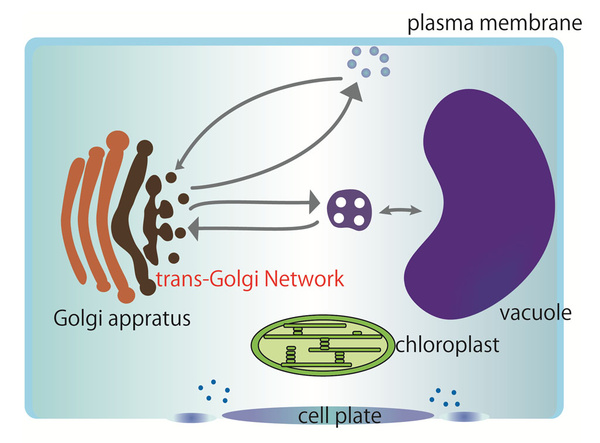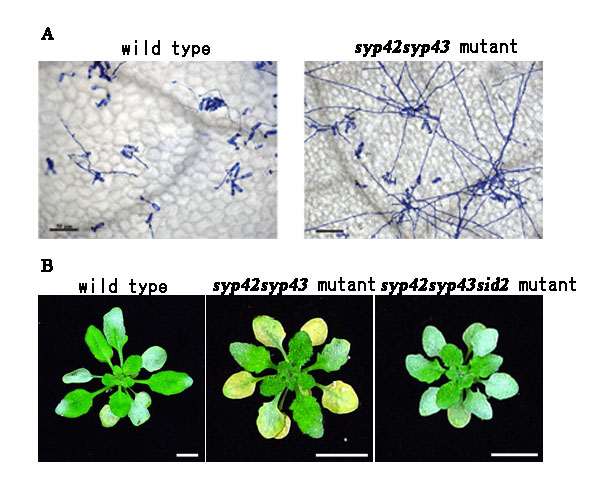Identification of the molecules regulating plant immune system in membrane trafficking system.
In all eukaryotic cells, a membrane-trafficking system connects the post-Golgi organelles, such as the trans-Golgi network (TGN), endosomes, vacuoles, and the plasma membrane. This complex network plays critical roles in several higher-order functions in multicellular organisms. The TGN, one of the important organelles for protein transport in the post-Golgi network, functions as a sorting station, where cargo proteins are directed to the appropriate post-Golgi compartments. Unlike its roles in animal and yeast cells, the TGN has also been reported to function like early endosomal compartments in plant cells. However, the physiological roles of the TGN functions in plants are not understood. Here, we report a study of the SYP4 group (SYP41, SYP42, and SYP43), which represents the plant orthologs of the Tlg2/syntaxin16 Qa-SNARE (soluble N-ethylmaleimide sensitive factor attachment protein receptor) that localizes on the TGN in yeast and animal cells. The SYP4 group regulates the secretory and vacuolar transport pathways in the post-Golgi network and maintains the morphology of the Golgi apparatus and TGN. Consistent with a secretory role, SYP4 proteins are required for extracellular resistance responses to a fungal pathogen. We also reveal a plant cell-specific higher-order role of the SYP4 group in the protection of chloroplasts from salicylic acid-dependent biotic stress.
Program member
Akihiko Nakano (Department of Biological Sciences, Graduate School of Science)

Figure 1. Membrane trafficking pathways in plant cell. The TGN, one of the important organelles for protein transport in the post-Golgi network, functions as a sorting station.

Figure 2: A. Formation of epiphytic E. pisi (avirulent powdery mildew) hyphae on the indicated plant genotypes. Microscopic images were taken at 3 days after inoculation with E. pisi spores. B. Macroscopic images of infection phenotypes of G. orontii (virulent powdery mildew) inoculated on the indicated plant genotypes. Images were taken at 7 days after conidiospore inoculation. Scale bars = 1 cm. Note the pathogen-induced leaf chlorosis phenotype of syp42 syp43 plants.
